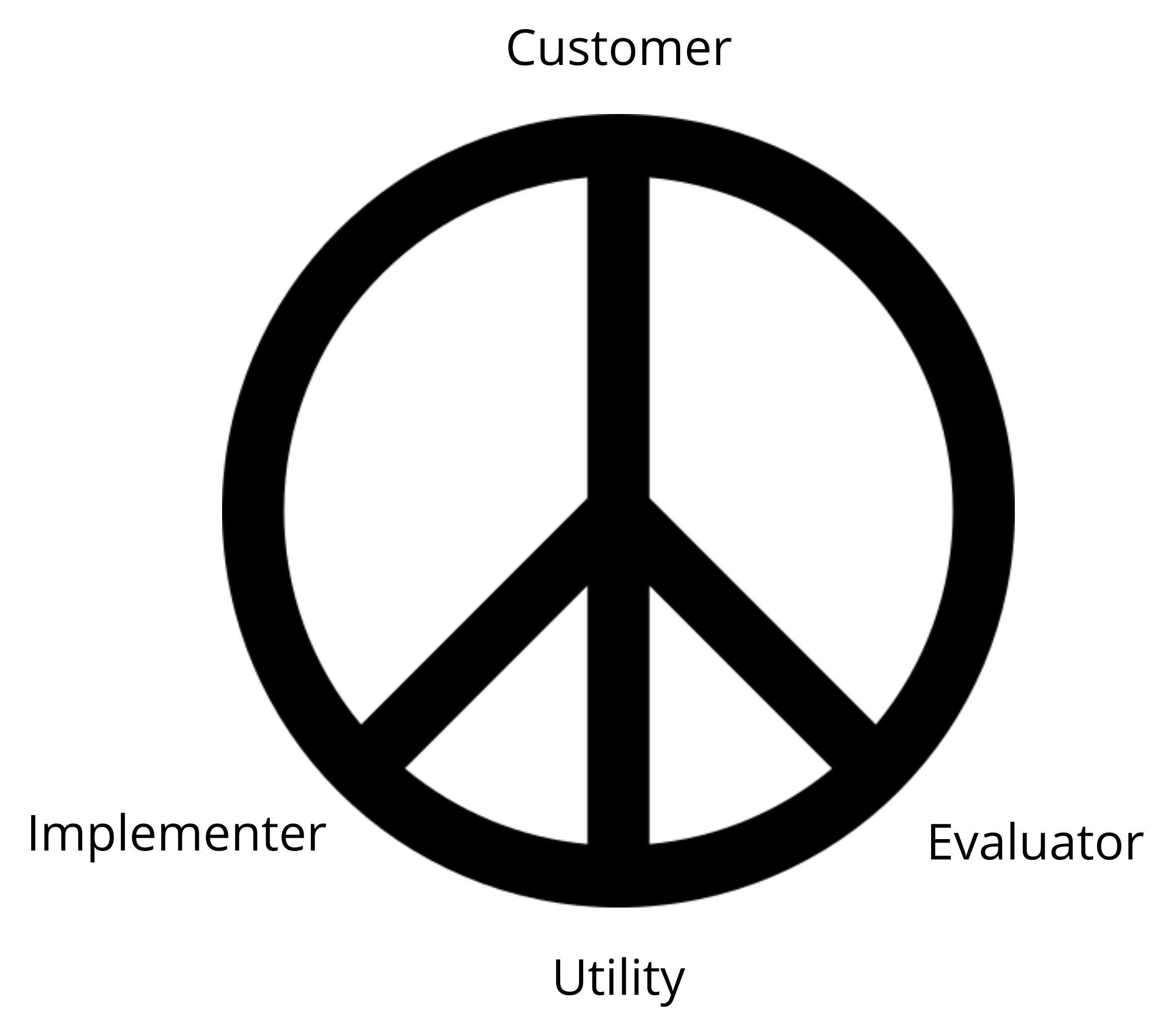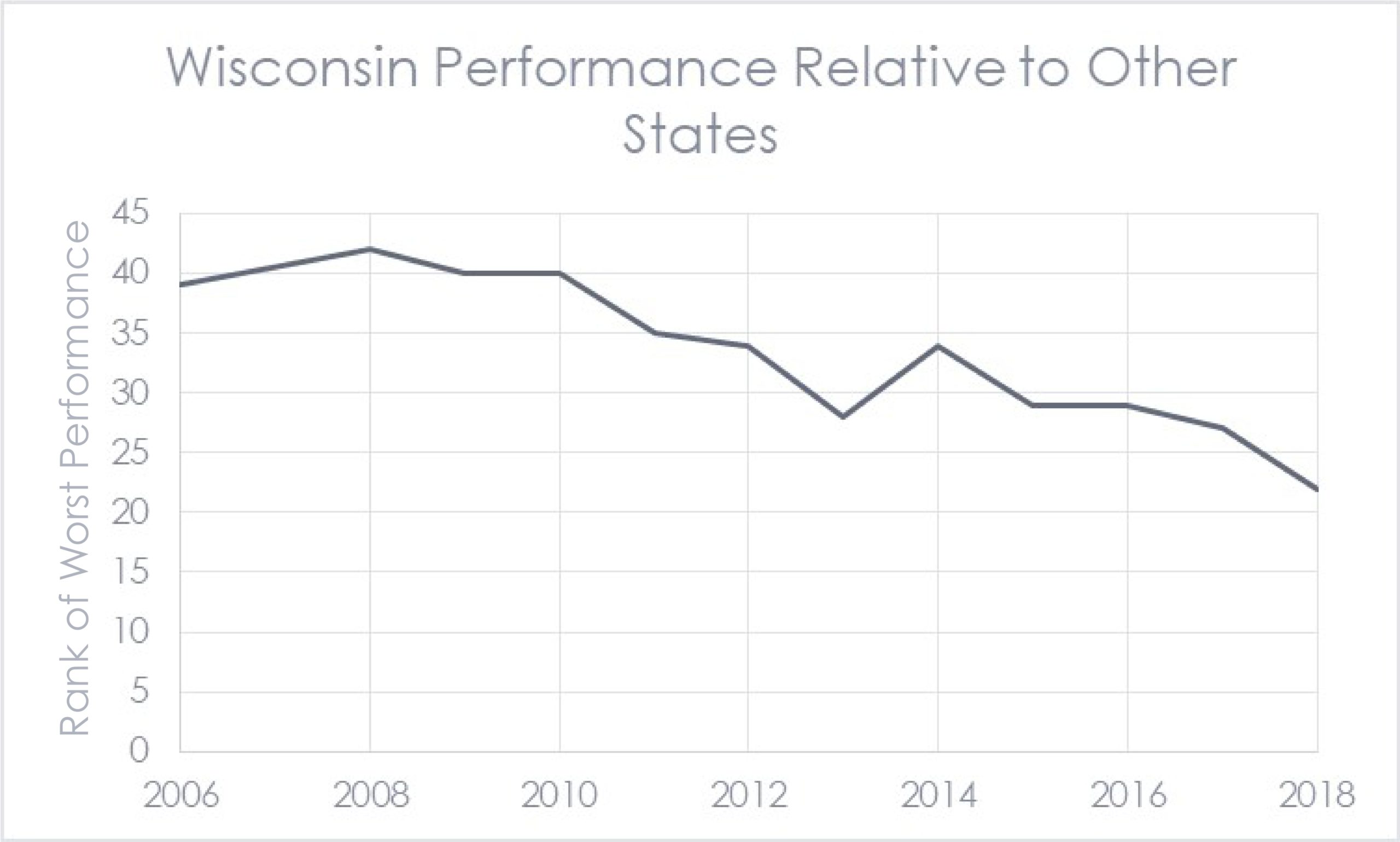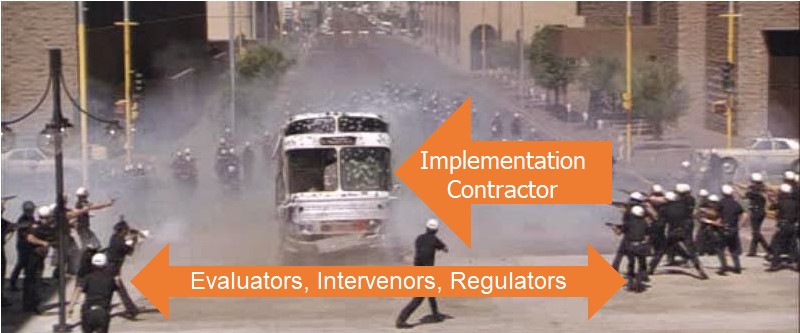
This post rolls out better ideas for pay for performance (P4P) programs you read about in the last two posts here and here. But first, I will set the stage from the perspective of the program implementation contractor. Perhaps it is best depicted with a scene from the cartoonish 1977 Clint Eastwood flick, The Gauntlet. I think a bit of cooperative teamwork is needed to make P4P approaches work – and they can work well!
Punk
There is another issue with third-party P4P concepts, and staying with the Clint theme, it goes like this: “Go ahead, punk. Make my day.” That is, here is our service territory (with map and list of communities). Good luck.
In some jurisdictions, it has been declared that dissolving the critical triad of the customer, utility, and implementer, which has served all well for decades, will produce a better outcome. We rid the utility’s conflicting interests to reduce sales. Horse hockey. The third party P4P programs can be like hiring a consultant to come into fast food restaurants to hassle customers to use fewer paper napkins. This is based on a true story from a few years ago. It is not going to work well, or at least as good as it could or should be, for the restaurant patrons, restaurant, or consultant.
Think about it, as a utility, I would have to let somebody intervene with my customers, and I get infinitesimal or no customer satisfaction or brand building from the program. It encourages cream-skimming, commodity programs. It discourages market transformation. Instead of teaching trades to fish, it encourages handing over the fish, and then getting whacked by the EM&V Gestapo on attribution charges.
Making a difference is hard, and it takes time, and our industry needs to adjust. I will write about this next week.
Back to Successes Past
Let’s consider reviving successful models that were shamed out of existence.
Meeting Needs
Successful programs include a wide variety of products and services for every sector and subsector served by the utility. They have consistent branding and marketing across the portfolio. Referrals to better-suited programs are laced throughout program offerings to capture much greater savings with cross pollenization. Fragmented P4P approaches provide no incentive for implementers to take time to direct customers to programs beyond their own. Why would they do that? They are paid for the performance of their program, not others. It isn’t selfishness. It’s business.
Unity v Splintered
Implementers, utilities, and evaluators need to work as teams delivering efficiency and load management resources. Regulators need to regulate these teams as they regulate supply-side resources. Isolating a fragmentation of implementers in their buses is sub-optimal, at best. We have worked in states where evaluators beat down the savings in Round 1. In Round 2, regulators make the evaluators beat them down a second time. This is unhealthy, to say the least.
Common Interests
Allow utilities to earn a return on efficiency resources, like say, their weighted cost of capital. This removes the disincentive for utilities to do more than bare minimum to comply with portfolio standards. Efficiency and load management resource growth will explode. This is what we had at one point in Wisconsin until the model was ground down to the point of misery for the utility, and they simply quit. The parties involved have all moved on, so I can say this. I can’t resist demonstrating how that hostility has contributed to Wisconsin’s fall in the ACEEE scorecard ratings since that time.

Modernize
Provide what is needed to make things happen. I will write about this in greater detail next week, but clapping seal program constructs belong on the endangered species list. Today, customers need information, feedback, coaching, goal setting, and continuous engagement and improvement. These critical elements can be delivered to every sector from mass-market residential to custom-delivered for large energy users. Customers often, if not usually, don’t need herring. They need services (implementer’s time), decision-making information, easy access to capital (sometimes), and performance assurance.
Customer Assurance
The final piece of the puzzle is adding a project performance guarantee to the program. I think it is less needed in modern times, but customers sometimes don’t quite believe the savings will be realized. So, guarantee positive cash flow for large capital improvement projects. An entire industry has operated for decades on this business model. Why not let utilities do it? Who pays for non-performance? First off, non-performance claims have proven to be almost non-existent because non-energy factors drive many projects. NO! This is not a free rider. Wait till next week. But to answer the question, the program pays for non-performance in the handful of claims that are proven not to perform.

In summary, interests among the implementation parties, including the utility and implementation and evaluation contractors, must align. Hanging any of these team members out to dry, leaving them exposed, or pitting them against one another is bad practice. Let the regulators do their job as they do with supply-side resources. Regulators can hire a small evaluation oversight team. We have been on a number of these oversight teams in various states. If regulators want more equity among customer sectors, socioeconomic, and geographic groups, etc., negotiate a solution with the team. This generates customer confidence, consistency, fairness, cross-selling, economy of scale, brand building, and positive customer experience. As for impacts? Off the chart, because you have a unified team with a common interest in making things happen.






